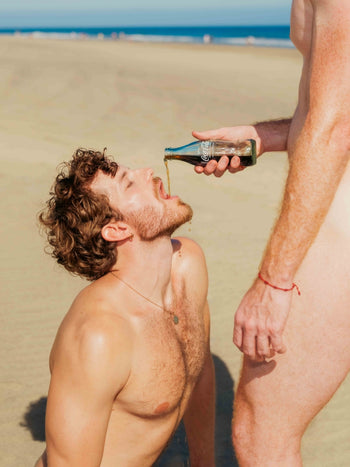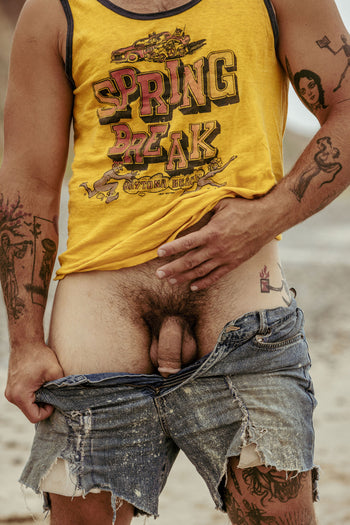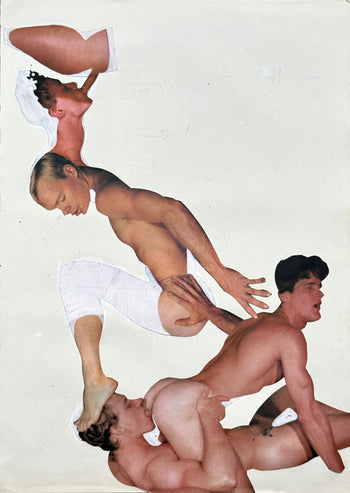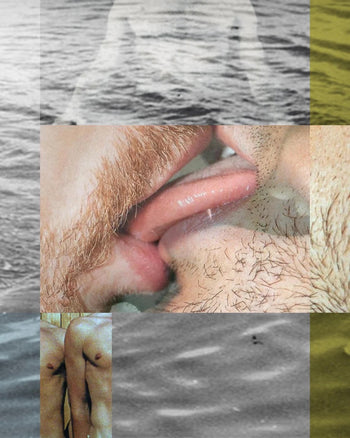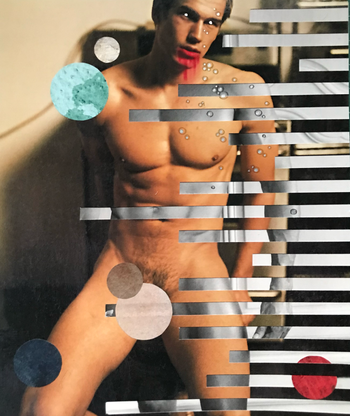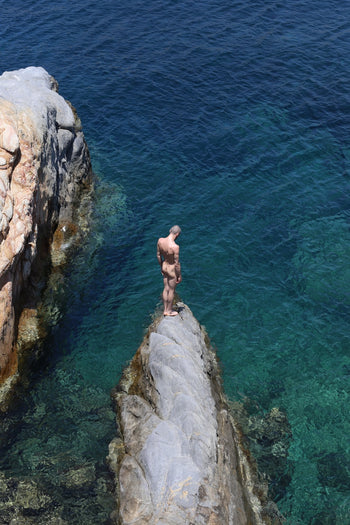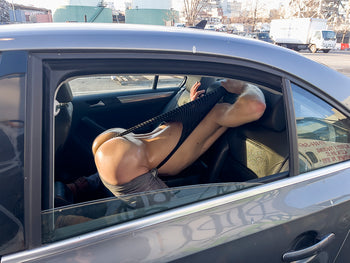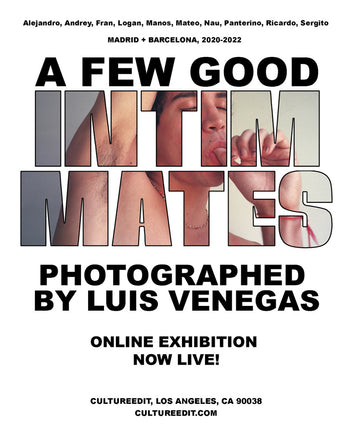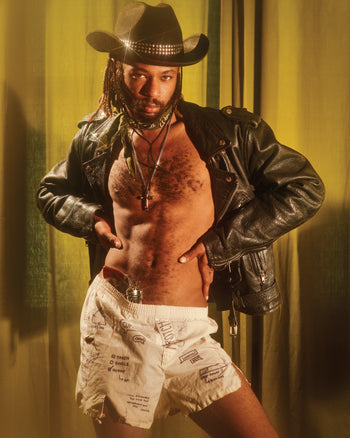
What initially sparked your interest in Fashion?
I remember being twelve-years-old when my favorite uncle brought The Geminis record (of Spanish singer Ana Belén) to my sister. I was fascinated by the album cover. It was the first time I ever looked for the credits of a pic. Who shot that? What’s the designer of that dress? That was the hook I needed to take an interest in fashion imagery. First through Spanish Vogue and other Spanish magazines, soon after that international magazines, specifically American Vogue and Vanity Fair in the 90s. My interest kept growing and has been growing ever since.
What was it like working with Thierry Mugler? What did you learn?
It was a dream! Mr. Mugler was everything you could expect him to be in the mid 90s at the height of his brilliance; a radiant, powerful creative presence. I had the chance to meet many of the stars I had seen only in magazines before: models like Jerry Hall, Kristen McMenamy and Carmen dell’Oreficce to name a few. And the legendary corset-maker Mr. Pearl — I was an intern for that very famous Mugler Haute Couture show inspired by insects.
With Mugler, I learned something very basic that changed my perception. All those dreamy clothes I had seen only printed in the pages of magazines were actually real! They started as an idea and then a team was behind them, working hard to put everything together and build an everlasting dress, a timeless impression. That was a simple, yet powerful revelation.

Was there a definitive moment you decided to create a magazine?
I was working with my then all time favorite fashion designer Sybilla, in Madrid, but that job wasn’t giving me any creative satisfaction… So my uncle (again) asked me one day: “What would you really like to do?” Even I was a bit surprised by my immediate answer, “I want to do my own magazine!” I hadn’t really thought about it as a possibility, but after that day I started to make that wish happen, little by little.
After executing your first publication, were you aware it would become your life’s work?
Kind of… Being an independent publisher in my case means freedom, but also a constant uncertainty about what’s going to happen next. For example, I always feel like the last issue of any of my publications could easily be the last one I’ll ever publish, and then I do another. That’s how it is for me.
When looking at your oeuvre, there’s a vast breadth of subjects all with varying tones, and yet there’s an editorial cohesion to it all. In your words, how do you define yourself and your magazines? Do you?
It’s hard for me to say. I can’t really “see” them from the outside, I’m completely involved in their creation. But I think it’s true, no matter the difference between titles, there’s somehow a common thread between them. I guess somehow they reveal certain aspects of my own personality? A certain sense of humor, a joyful approach to life, a deep rigor on making things good. There’s an appreciation to the past and an insatiable curiosity of what’s new, sometimes a daring, sharp point of view… Do I make sense? Feels weird to talk about myself in those terms, but those are some of the aspects that I’m often asked about when I’m interviewed, so I guess those are the main ones.
During a recent Q&A for Central Saint Martins College, you said your three main intentions are to “inform, inspire, and entertain” — where did those values come from?
I heard that for the first time from my dear friend Ruth Ansel, the legendary Art Director who has been working on the greatest magazines since the mid-60s. She’s not only a friend, but a mentor to me. And I think she’s so right about that quote. “Inform, inspire and entertain” should always be the main focus for any magazine (and I’d say also for any form of communication!).

A one stop shop, you conceptualize, edit and ultimately publish your own magazines… How do you manage so much responsibility? What does your support staff look like?
I work hard haha! I’m so lucky to work with some of the greatest creatives in the world; great artists, photographers, writers, graphic designers… I also manage the production of the magazines, the printing process, the distribution, even the stores that sell them and the online store. Everything. I work occasionally with many people during the creation of the printed publication, but in the end the team is my phone, my computers and I, no more no less. And I love that it’s full responsibility because if something doesn’t go right, I know I’m the only one to blame. Sometimes I have an intern, but very rarely. Usually it takes a lot of time to “train” them to do things as I’d like them to be done, so I tend to do those things myself. In fact, when I have had interns, I’ve taken it as a learning process for myself, to become more flexible. I like to learn from the interns I’ve had.
I never expected to see niche drag queens in the same publication as Anna Wintour. Can you talk about this juxtaposition?
Anna Wintour never has been in C☆NDY, that was me in drag dressed like her! To answer your question, I don’t believe in making differences between “high and low”, I’m just interested in many different people for many different reasons and I simply like to put them all together in the same publication, trying to keep it balanced and exciting.
How are you able to onboard the biggest names in fashion and pop culture?
Working hard. Also C☆NDY has earned a certain level of appreciation and credibility in the last eleven years since I started it. I guess it’s the magazine itself that convinces all kinds of people to be featured in it.

Where do you find references? And what are the touchstones of your vision?
Everywhere! The list would be too long… I once saw Tom Ford in a documentary saying, “If I’m awake I’m working.” I fully identify with that. It’s just connecting the knowledge in your brain and aligning it with your heart and spirit to make your vision happen fearlessly. Movies, music, arts yes… but also just walking my dog Perri could somehow be inspiring for some good idea. Really, it’s just a mystery, not really possible to make a proper plan for that.
How are you able to put so many opposing ideas together to create a harmonious product? What is that process like?
Now that you mention it, I think that’s probably another aspect I often try to do in my work, yes… thanks for noticing that! Well, as an editor I have to make choices. I always try not to be judgemental and often give space to some ideas that I don’t even fully understand. I like to learn things in the process of making a new issue, and very often, examining opposites makes you realize there’s more than two sides of a coin.
You have long championed Trans subjects (since C☆NDY), even when it was considered avant-garde. Have you noticed a cultural shift in how these images are received? Or do people still see Trans imagery as controversial?
Obviously the recognition for any progress regarding Trans rights in our society belongs to the activists who fought in the past and the ones who are still fighting today. However, in the very specific matter of Trans visibility in the fields of entertainment, communication and fashion magazines, I think C☆NDY has played a pivotal role. I’m not trying to put any medal on me for that, but also, I won’t be falsely modest denying what C☆NDY has done, especially the value of the work that many contributors have done for the magazine. It’s very simple. Before C☆NDY it was pretty unthinkable to see any Trans representation in fashion magazines, shows or campaigns… now it finally looks like that’s changing. About time! I’m not saying C☆NDY made the change, but it certainly contributed a bit before any other publication.

As an independent publisher, how do you influence culture?
Publishing my magazines is enough for me… I don’t think further beyond that. I mean, if they are of any influence, that’s nice, but also completely beyond my control. I guess just the fact that they’re out there in the world somehow, perhaps influencing someone— and if that’s the case I hope they’ll be an influence for progressive thinking.
Your work is irreverent. Where does that come from?
I think I’m very reverent! I just like to have fun considering unexpected angles when approaching the contents of the magazines.
Do you identify as a queer brand?
I never thought of myself as a queer brand, I just work on what I like, what intrigues or interests me. But I understand that the rest of the world needs to categorize products for marketing purposes. Seeing all the publications I’ve done, I guess “queer” is a proper tag for my work. I’m a queer person, so everything I do is inherently queer. I feel like that slogan for t-shirts: “Sounds queer. I’m in!”
What’s it like to have Rizolli publish a compilation of C☆NDY (The C☆NDY Book of Transversal Creativity)?
It’s fun! I’ve enjoyed doing it a lot. I’m sure the usual C☆NDY readers will like it, and I hope it’ll attract a new, broader audience.

C☆NDY was just the beginning, but each of your publications: EY!, The Printed Dog, Fanzine137… they each have their own distinct flavor. How do you keep each of these projects separate?
I have many different interests, and I’d also say an endless curiosity. Each one of those titles has a distinctive personality, so it’s easy for me to compartmentalize and figure out which one is the best platform for any new idea that I wish to develop. Sounds complicated? It’s easy, comes naturally.
Is there a new publication in the works that we can look forward to?
Always! But like they say in Gossip Girl: “That’s a secret I’ll never tell, XOXO”.

